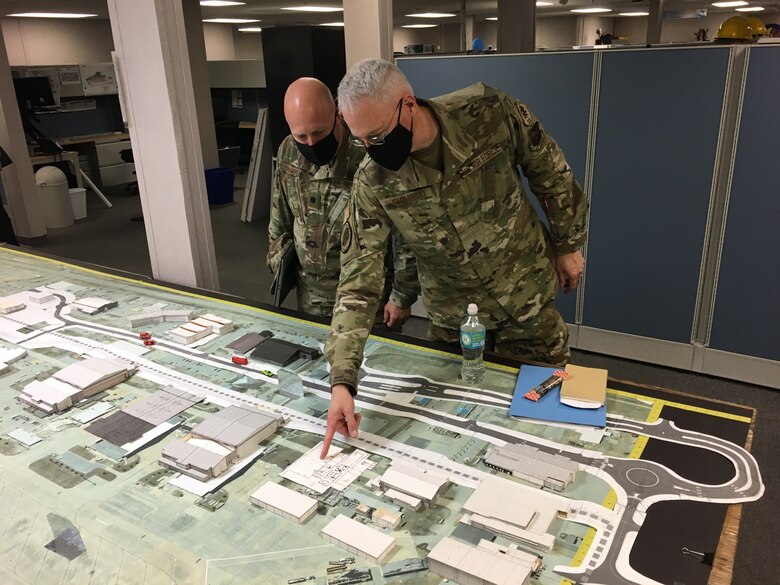The Air Force Civil Engineer Center and U.S. Army Corps of Engineers have partnered before, but never on such a herculean effort.
Prior to Hurricane Michael's direct hit to Tyndall Air Force Base, Oct. 10, 2018, USACE assisted AFCEC with two to four new military construction projects per year at the Florida base, ranging from $1.6 to $17.8 million. After 2018, that number multiplied more than tenfold when AFCEC turned to USACE to help with the challenge of rebuilding the base.
Today, USACE experts are assisting with more than 40 new military construction, or MILCON, projects while simultaneously overseeing more than 100 new facilities in the reconstruction of Tyndall AFB as the Installation of the Future.
"We work closely with USACE to develop the rebuild requirements, and through planning and programming to make sure we are able to build the facilities we need within budget in a timely manner," said Keith Kellner, deputy director of execution for the Natural Disaster Recovery Program Management Office at Tyndall AFB.
The NDR program serves as a strategic reserve of expertise equipped to tackle current and future natural disasters and enhance installation resiliency. As the Department of Defense construction agent predominantly responsible for new facilities and infrastructure MILCON, USACE is responsible for design, reviews, construction timelines, contract awards and overseeing construction from start to finish. Together, the two organizations are helping the 325th Fighter Wing and the Department of the Air Force step into the 21st century.
In addition to more than 40 MILCON projects at Tyndall AFB, USACE is also overseeing some of the more complex facilities sustainment, restoration and modernization, or FSRM, projects for buildings that can be repaired. With aggressive delivery timelines and the overall complexity of the rebuild scope, USACE is leveraging the support of their Mobile, Alabama and Savannah, Georgia districts, Engineering Research and Development Center and other centers of expertise.
"The rebuild mission at Tyndall, creating a completely connected set of smart infrastructure, has the potential to inform both Air Force and Army leadership by leveraging lessons learned and successes in its reconstruction to achieve innovations across the Department of Defense in the future," said Lance Marrano, Tyndall innovation science and technology advisor for USACE's ERDC.
Even before Hurricane Michael leveled Tyndall, USACE's ERDC was exploring what future military installations should look like. With the abundance of recent technological advancements and innovation in the public sector, Marrano said their research investigated ways to incorporate improvements in connectivity, infrastructure, energy resilience and community services within the military, while maintaining cyber security.
"Bringing the knowledge and experience USACE has, to look at successfully capturing these public sector innovations and adopting them into the Installation of the Future, will enable our military to evolve," Marrano said. "However, it is no small task because we are more secure and everything must be evaluated through that lens."
While only one base is synonymous with "Installation of the Future," Col. Travis Leighton, NDR program chief, recognizes the potential to drastically change how the Air Force operates and maintains all its installations.
"We have a unique opportunity here to explore these innovations and improve the way the Air Force supports power projection from its installations in the future," Leighton said.
The nearly $5 billion rebuild at Tyndall will be a five-to-seven-year-long process, which includes more than 40 new MILCON projects and 260 FSRM projects. To learn more about these efforts visit the Tyndall Program Management Office website.

Brig. Gen. Mark Slominski (right), director of the Air Force Civil Engineer Center's Facility Engineering Directorate, and Lt. Col. Andrew Hoisington, Tyndall Program Management Office Execution Branch chief, look over the construction plan model for Tyndall Air Force Base, Fla., in March 2021. (U.S. Air Force Photo by Don Arias)






